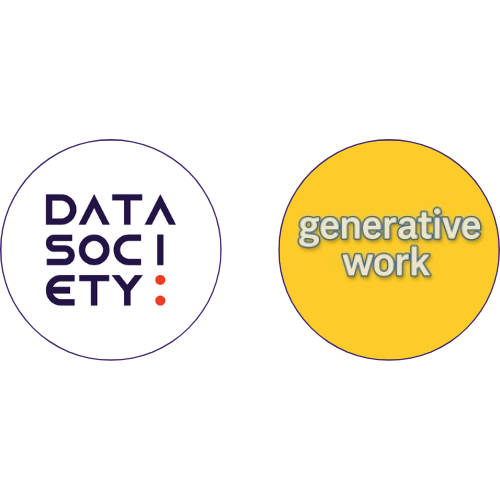If a data scientist identifies a critical insight, but no one around them understands the discovery, does it matter? The value of even the most groundbreaking insights can be limited if their significance is lost or distorted in translation. This is a reality that many organizations face as they invest in data initiatives to drive outcomes, such as better decisions and operational efficiency. Among the most successful tools for bridging this communication gap, data visualizations help organizations transform data-driven information into meaningful, digestible, and actionable intelligence.
Telling Powerful Stories With Data
The case for visualizing data is clear given the statistics related to graphical information delivery:

- A team of MIT neuroscientists performed research that found that the human brain can process visual images in just 13 milliseconds.
- According to Edgar Dale’s Cone of Experience, people generally remember 30 percent of information they’ve seen, compared to 20 percent of information they’ve heard and 10 percent of information they’ve read.
- Researchers at 3M Corporation and the Management Information Systems Research Center at the University of Minnesota concluded from a joint study that presentations accompanied by visual aids were 43 percent more persuasive than presentations that lacked visual aids.
- The American Management Association cites studies that found that visual communication decreases meeting duration by 24 percent and increases a group’s ability to reach consensus by 21 percent.
Such findings support the notion that visualizations can be powerful vehicles for quickly and clearly communicating insights, creating a shared understanding of data-driven intelligence, and accelerating decision-making processes. It is easy to imagine the business value that well-crafted data visualizations can deliver to professionals across many functions and organizations.
Data Visualization Skills for all Roles
Adeptly visualized data helps analysts and their audiences perform exploratory analysis, which can reveal initial patterns, trends, and outliers. Data visualizations also support explanatory analysis that aids analysts in understanding causation and correlation between variables.
Whether plotting data points using Excel’s chart features or developing a dynamic dashboard in Tableau or Power BI, a range of professionals—including frontline personnel, project managers, data scientists, and software engineers—can increase the efficiency and impact of their efforts by learning how to implement visualization tools and techniques. For example, administrative teams can develop visual reference tools to inform their processes and report trends and outcomes. Managers can study the principles of data visualization to cultivate interpretative proficiency and develop a shared vocabulary with their teams. Analysts can identify patterns revealed in graphical depictions of data, and practitioners in more technical fields can produce dynamic visualizations in R and Python to explore large data sets for advanced analysis and modeling.
Data Visualization for Diverse Industries
Data visualization is likewise applicable across industries, as several use cases illustrate:
- Healthcare facilities improve patient care by using data visualization to observe and quickly interpret real-time patient data, detecting issues that require attention and decreasing response time.
- Dashboards help financial services institutions identify patterns, monitor activity for fraud, and share intelligence across teams.
- Workers in various departments within a city government apply visualization skills to gain insights into metrics pertinent to their work and streamline reporting of progress and outcomes.
- State officials use dashboards displaying engagement activity on different platforms to integrate, analyze, and track data related to vaccination campaigns and public response to them.
In all scenarios, such data applications are only as effective as the graphic displays that practitioners design to render them accessible.

The Elements of Impactful Data Visualization
Knowing the elements that make data interpretable through persuasive, clear, and reliable visualizations is critical for amplifying informative data narratives. To create impactful data presentations and avoid common data visualization hazards, designers must have an understanding of:
- The data. To present a data set faithfully and responsibly, you need to become thoroughly familiar with the data’s characteristics and use them to shape the design choices for visualization. For example, distinguishing between qualitative or quantitative variables and understanding their units are important early steps in analyzing and communicating data-driven insights
- Visualization types. Data can be presented in any number of forms. However, the type of chart or graph a designer chooses plays an important role in the visualization’s clarity, accuracy, and overall effectiveness. For example, bar charts serve a different purpose from scatter charts and histograms, so designers need to think through what best represents the specific data types and relationships between variables.
- The audience. Unless a visualization is intended only as an exploratory tool for an individual’s reference, the goal of creating data visualizations is to inform and persuade a specific audience. It is essential to consider the domains, roles, positions, concerns, and data literacy of the intended audience and use this understanding to design relevant visualizations. In addition, it is helpful to take into account the kinds of decisions or actions the data can inform. These insights can help designers make thoughtful decisions about the appropriate level of detail to include and the specific dimensions to highlight.
- Visual design. Letting the data tell its story clearly and persuasively requires best practices in visual design elements. Using visual elements sparingly, for example, is a key to provide clear optical messaging. Also, beyond understanding the varying impact of such elements as color, size, contrast, and positioning, making deliberate choices related to labels and legends helps shape the viewer’s experience and perception of a visual aid.
- Common pitfalls. Creating visualizations without the benefit of best practices can dilute their impact or confuse an audience. At worst, it can be misleading and result in poor decisions. Some of those missteps include using bad data, selecting inappropriate chart types, cluttering visualizations with unnecessary elements, and creating distortion through poor choices of scale.
Investing in Visualization Skills to Unlock Data’s Value
Let’s go back to our original question: if a data scientist identifies a critical insight, and their colleagues and stakeholders don’t understand it, does it matter? The answer, it seems, is that insights can languish unnoticed or misinterpreted if they are never clearly conveyed. Reaping the oft-touted rewards of data analytics requires skillful communication of relevant insights. Without that level of clarity, organizations will never be able to capture maximum value from their investments in infrastructure and data collection. Equipping teams to produce compelling and accurate data visualizations is just one essential step toward realizing the full potential of data resources. In our next blog, we’ll explore other strategies organizations can implement to boost the ROI of their data initiatives through effective data communication practices.

